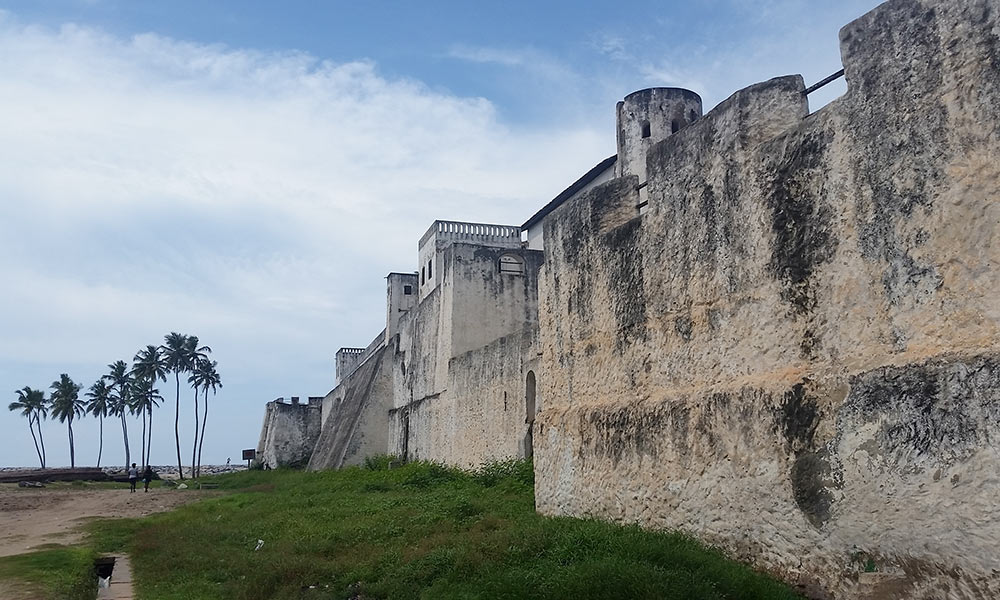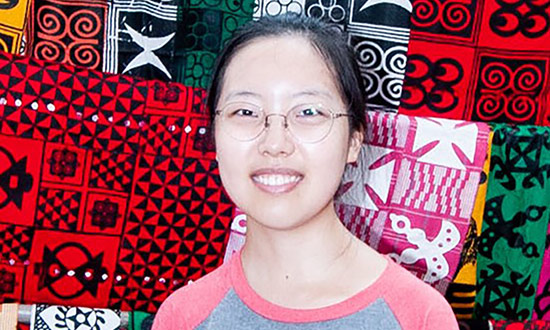This is the second summer that University students – led by professors Renato Perucchio, Michael Jarvis, and Chris Muir – are studying the engineering, historical, and cultural aspects of the coastal forts of Ghana. They will be sharing their experiences from the field here on this blog.
By Kate Korslund ’20
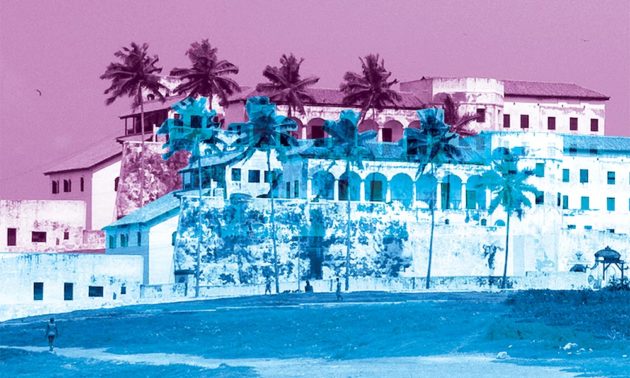
After a great few days in Accra, we drove to Cape Coast on Friday. I was excited to see Elmina Castle because that is what this trip is primarily about. I enjoyed touring around Accra (which you can read about in Louisa’s post!) because it is so different from any city I have visited before. I didn’t really know what to expect, but so far, I have noticed how the day really starts at 6 a.m. because of the light. Our time in Accra was a good adjustment period to get my bearings in a new place and prepare to start learning about the castle.
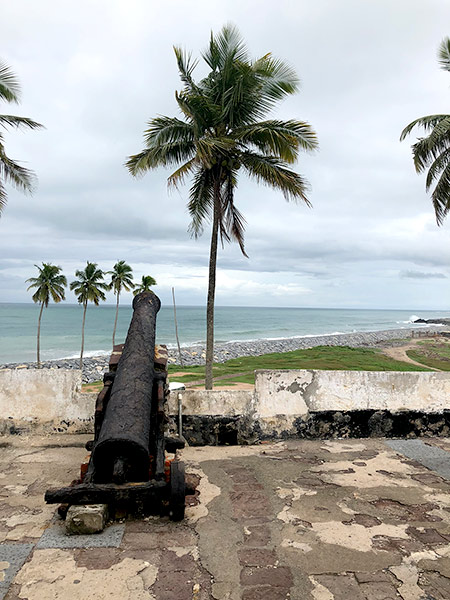
The trip to Cape Coast was about four hours by bus, which was a good time for resting and looking out the windows! The heat and strong sun here make even the mildest physical activity exhausting, so I was grateful for the extra time to rest.
We listened to the “Ghana Top Hits 2018” playlist on Spotify most of the way to hear some of the popular local music. It was fun to have two of our teaching assistants, Saba and Marley, explain the lyrics to us – translating pop music is quite humorous! The day before, we had picked up some mangos at a market, so we enjoyed those as a delicious snack during the bus ride. They were the most delicious mangos that I’ve ever had! We are staying at the University of Cape Coast Business School Guest House, which is nice and only 15 minutes away from the castle. Dinner was at a restaurant right on the beach, and I ate an entire plate of fried plantains. Even though it was dark while we were there, we could smell and hear the ocean, which is always incredible for someone from landlocked Minnesota like me.
On Saturday, we explored the town of Elmina and the castle. The day began with a lecture by Professor Gavua on the history of Elmina, so we had some context before seeing the town. Even though I am on the engineering side of this project, I think it is very important to understand the historical implications of the castle, especially in the context of the town today. I really want to work to understand the relationship between the people of Elmina and the castle. Elmina was a very important trade center, both in terms of slavery but also as the portal of globalization, where Europeans started interacting with the African continent.
The history of Elmina dates back well before the arrival of the Portuguese. Elmina was known for the mining and production of metals, cultivation of spices and more. The Portuguese arrived in 1471 and the castle was built by 1482. In 1637, the Dutch pushed out the Portuguese to take control of the area, before selling their concessions to the British. The fact that the castle was used by different countries, all with different uses and styles of building makes for a very interesting structural engineering project: figuring out the order in which parts of the castle were built by analyzing various rooms and materials. The lecture also made me think about the impact that the engineering aspect of the project would have on the community. This does not have one solution and is something that I would love to work towards.
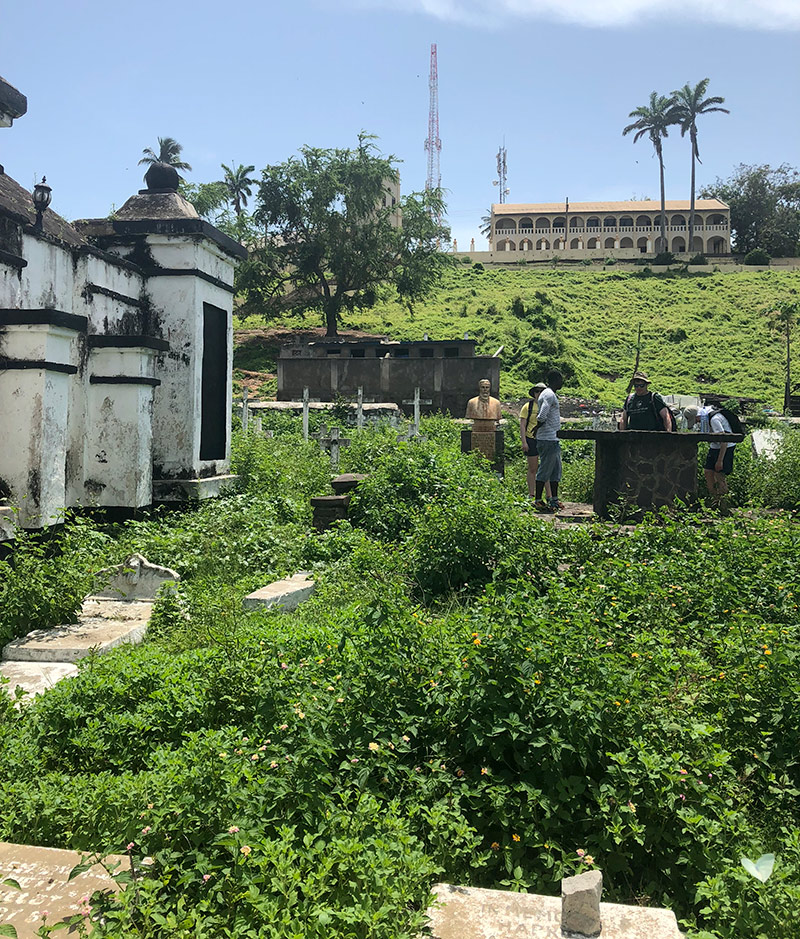
Following the lecture, we walked around the town of Elmina to get a sense of the community and see the historical monuments. A highlight for me was seeing Fort St. Jago, even though we couldn’t go in because it was locked. Fort St. Jago sits on a big hill, so we got to see the town of Elmina and Elmina Castle from above. It was a beautiful view! We walked around the town, stopping at other historical monuments along the way. I still am not used to the heat, so it was very exhausting, and I probably drank at least 4 liters of water that morning (I am known among the group for drinking the most water)!
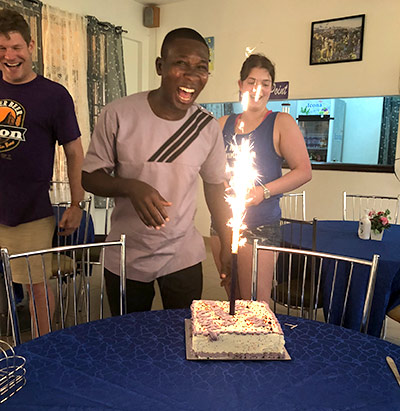
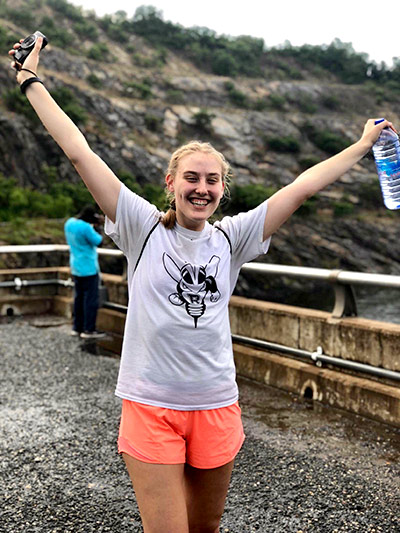
In the afternoon we finally got to see inside Elmina Castle. Pictures of it don’t do it justice. I had looked it up several times before coming but didn’t quite understand the magnitude of the castle. It is a spectacular place for a summer job because on three sides you have a breathtaking view of the ocean (way better than a cubicle!). Our first order of business in the castle was a guided tour. I found this interesting because we got to hear what tourists or other visitors will hear about the history of the castle. I compared the tour to what we had learned from the lectures, but I also got sidetracked by looking at interesting structural elements.
Mr. Doh, our awesome bus driver, is a huge part of this trip and does so much for us, so we threw him a mini birthday party for lunch on Sunday. We had a delicious cake and sang Happy Birthday. Everyone was worried about the candle that acted more like a firework, however safe to say nothing burned down! He was very surprised by it and I hope that we made it a special day for him. On Sunday we toured around the castle with Professor Perucchio and we discussed the structural elements of most of the rooms, as well as a lot of the questions we want to answer about the castle. With each new room, I had more and more questions. It felt a little overwhelming but it’s a good problem to have – we have lots to learn about the castle!
We’ve officially been here a week, and I feel well adjusted. It feels like it’s been forever and for a very short time – all at the same time. I am still working on getting used to the food. Pretty much every meal is jollof rice, noodles, plantains, chicken or fish, and fruit. It’s always delicious but I am missing vegetables already. I am really excited to continue working on the castle, learning more about the town of Elmina and its history. I hope that by the end of this field school we have a better understanding of the structural elements of the castle and the implications for the community, and I can’t wait for the coming weeks.
Thanks for reading!
Kate Korslund is from Minneapolis, Minnesota and is majoring in mechanical engineering with a minor in French. She is participating in the field school through the Xerox Research Fellows Program. She is interested in analyzing the castle and determining conditions that would cause failure and excited to learn more about a new country! Besides mechanical engineering, she is a member of the varsity volleyball team at UR, a member of Society of Women Engineers, and a mentor for an elementary school robotics team. She loves cats, reading, and traveling.


